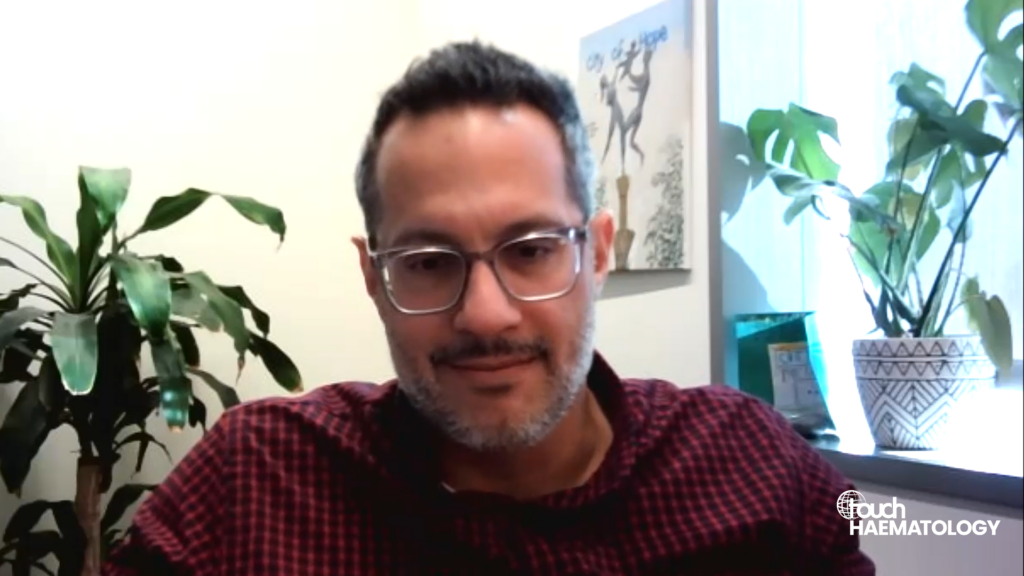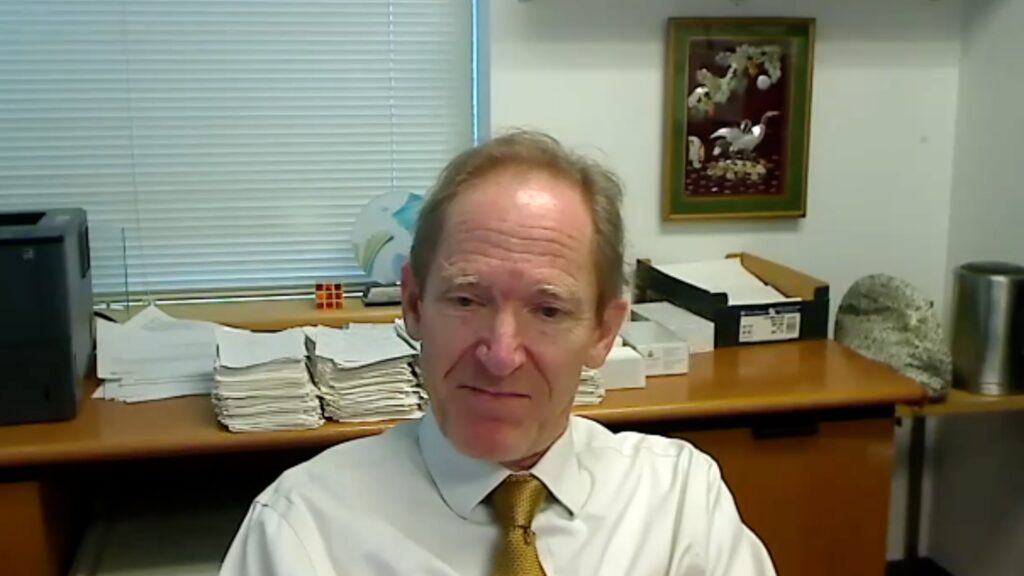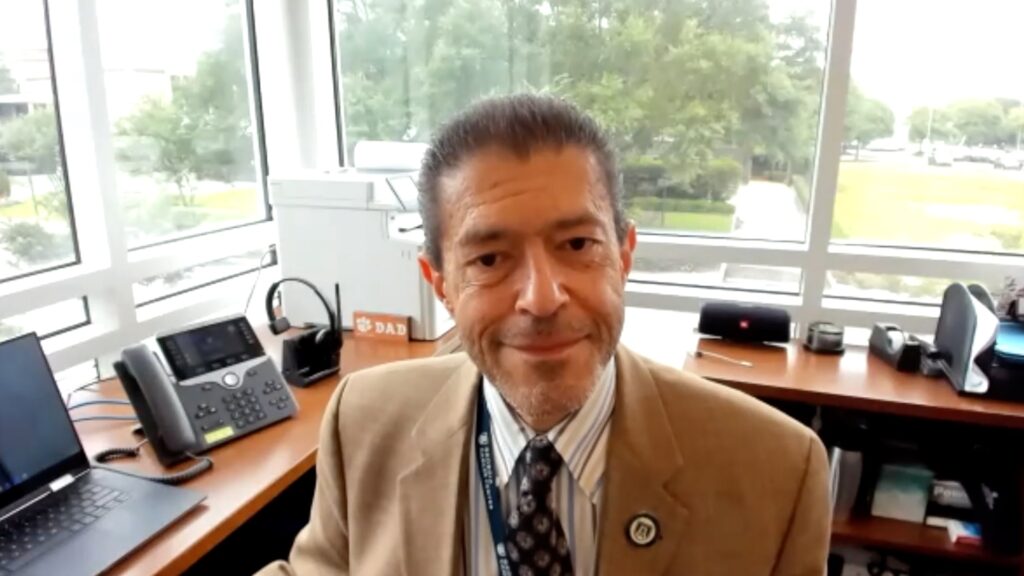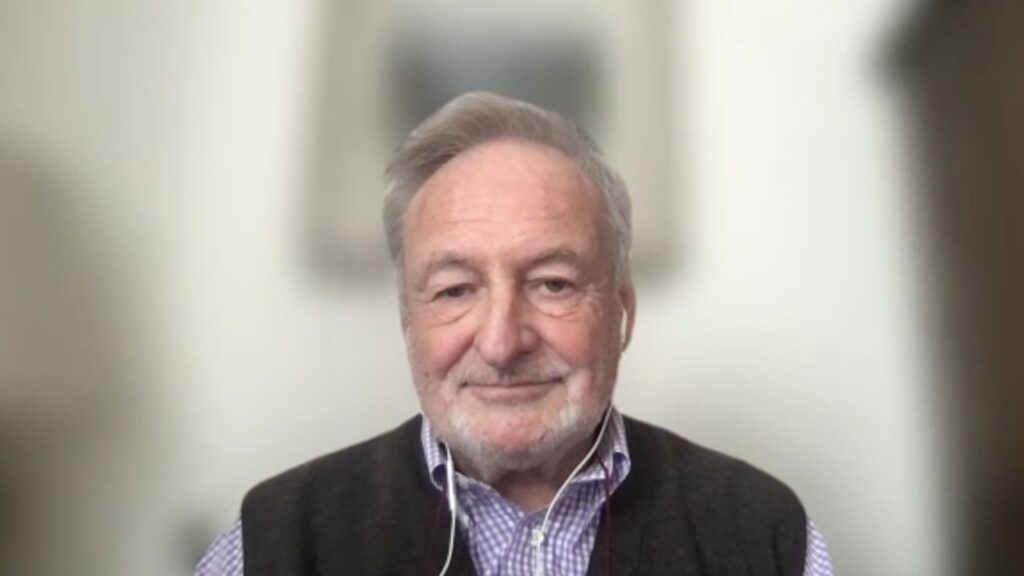“These triplet regimens are showing response rates approaching 90% in some subsets. That’s remarkable in lower-intensity therapy”
Lower-intensity treatment strategies for acute myeloid leukemia (AML) are advancing quickly, offering hope for more effective and better-tolerated regimens – particularly in older or unfit patients. Dr Pinkal Desai (Associate Professor at Weill Cornell Medical College, New York, NY, USA) highlights encouraging early-phase data on novel triplets and oral regimens presented at the 2025 European Hematology Association (EHA) Congress in Milan.
“Much of the discussion centres on frontline therapy, though some findings extend to relapsed/refractory settings. Menin inhibitors remain a focal point, with promising activity in AML harboring KMT2A rearrangements or NPM1 mutations. Triplet regimens combining menin inhibitors such as blexaminib or revumenib with azacitidine and venetoclax, along with a fully oral decitabine/cedazuridine plus venetoclax regimen, may soon redefine standard care.
Abstract S137: Bleximenib + azacitidine + venetoclax
Dr Andrew Wei presented early results from a triplet regimen of bleximenib, azacitidine and venetoclax in KMT2A-rearranged or NPM1-mutated AML. In relapsed/refractory patients treated at 150 mg BID, the composite complete remission (CRc) rate was 37.5%, rising to 75% in newly diagnosed patients – an impressive outcome for a lower-intensity regimen.
Of note, prior venetoclax exposure influenced outcomes: complete CRc was 28.6% in previously treated patients versus 73.3% in venetoclax-naïve individuals. No acquired MEN1 resistance mutations were observed, and the safety profile was consistent with standard azacitidine–venetoclax regimens. Differentiation syndrome occurred in fewer than 4% of patients, and no QT prolongation was reported.
A randomized phase III trial is now enrolling older adults with newly diagnosed KMT2A-rearranged or NPM1-mutated AML to evaluate this triplet as a potential new frontline standard.
Abstract S138: Revumenib + azacitidine + venetoclax
Also targeting KMT2A or NPM1-altered AML, Dr Joshua Zeidner presented data from a BEAT AML study evaluating revumenib with azacitidine and venetoclax in older, newly diagnosed patients. Initial protocols required 28 days of venetoclax per cycle; however, prolonged cytopenias prompted a revised dose-reduction strategy prioritizing revumenib first.
The triplet achieved CRc rates of 89% in KMT2A-rearranged and 79% in NPM1-mutated disease (overall 88%). A signal of reduced survival in the NPM1 group may be linked to extended venetoclax exposure; this could improve under the updated protocol. A phase III trial is underway to evaluate this triplet in a randomized setting.
Abstract S135: All-oral azacitidine–venetoclax backbone
Dr Gail Roboz presented data from the phase I/II SERAVYNE trial evaluating an all-oral regimen of decitabine/cedazuridine plus venetoclax in newly diagnosed AML. This approach offers convenience for patients avoiding frequent clinic visits.
Despite concerns about cytopenias with oral agents, the regimen was well tolerated and manageable. Early bone marrow assessments were emphasized to optimize timing and minimize toxicity – especially relevant as more potent triplet backbones emerge.
In the phase IIb cohort (n=101), the CR/CRi rate was 63.4%, with 55% achieving MRD negativity. Median survival for MRD-negative patients had not yet been reached; MRD-positive responders had a median survival of 15.5 months. At 12 months, 75% of those achieving CR remained in remission.
Across these studies, lower-intensity AML regimens are demonstrating robust MRD-negative responses with manageable toxicity. As phase III trials progress, these options may pave the way for a more personalized, lower-intensity treatment paradigm – one that preserves efficacy while improving tolerability for older or high-risk patients.”
Browse all EHA2025 content here!
Disclosure: Pinkal Desai has received grant/research support from Kura Oncology, Janssen Research and BMS. She is a member of the Advisory Board for BMS, Kura Oncology, Syndax, Servier and Abbvie. She has received other financial or material support from Genentech/Roche.
Cite: #EHA25: Lower-intensity AML therapies show high response rates in early trials. touchHAEMATOLOGY. July 22nd, 2025
Interviewer/Editor: Sophie Nickelson
This content has been developed independently by Touch Medical Media for touchHAEMATOLOGY. It is not affiliated with the European Hematology Association (EHA). Views expressed are the speaker’s own and do not necessarily reflect the views of Touch Medical Media.
SIGN UP to touchHAEMATOLOGY!
Join our global community today for access to thousands of peer-reviewed articles, expert insights, and learn-on-the-go education across 150+ specialties, plus concise email updates and newsletters so you never miss out.












